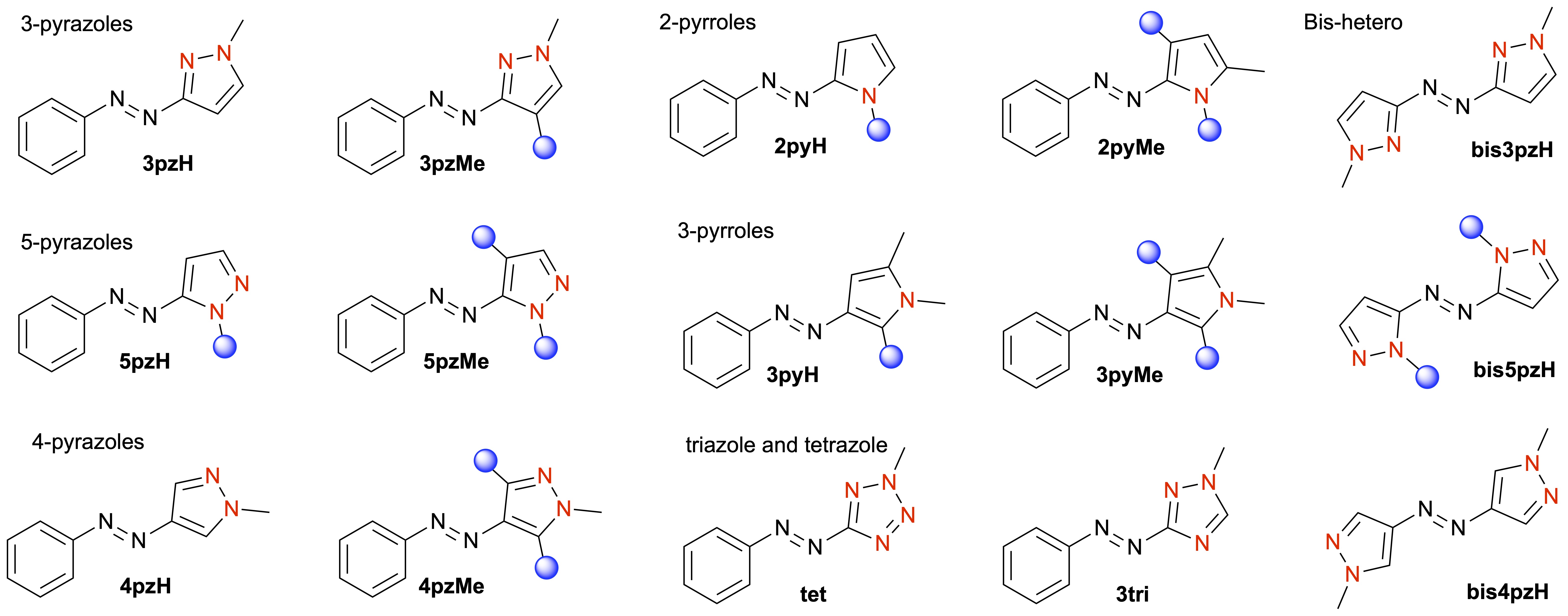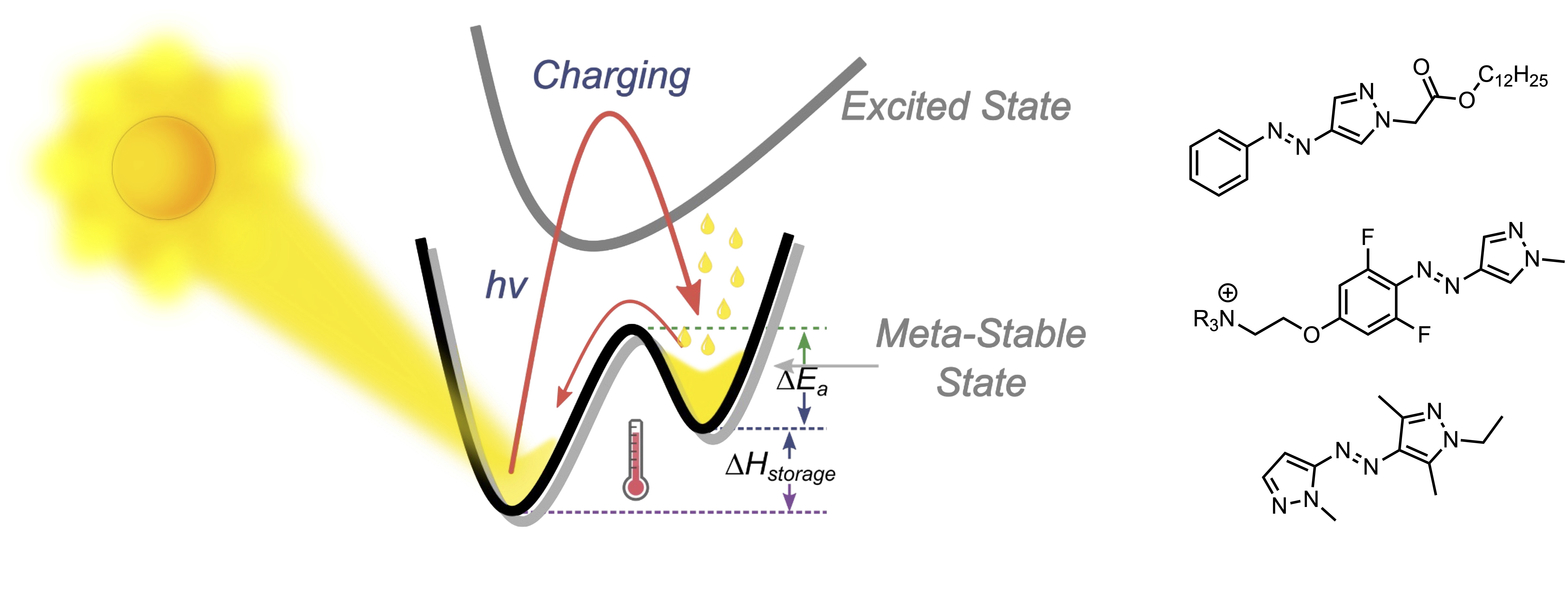The interaction of light with molecules continues to be a key area of research for the group. For example, photoswitchable molecules are photochemically active compounds that can be reversibly switched between (at least) two states by irradiation with light. There is high interest in developing new and improved photoswitches due to the spatial and temporal control made possible by using light as an external stimulus. As such, photoswitchable molecules are reported in numerous applications, from photopharmacology — where light switches between two states of a molecule with different pharmacological activities — to optical data storage.
Photochemistry
Azobenzenes represent a privileged scaffold for photoswitches, since they are easily synthesised, have high extinction coefficients and quantum yields (allowing photoswitching with low-intensity light), and are stable to repeated switching. However, photoswitching of azobenzene is often incomplete, with mixtures of E/Z isomers obtained at a given wavelength of light. We have been studying the replacement of one or both benzene rings in azobenzene with a heteroaromatic ring — an underdeveloped concept prior to our work. Our research has led to many exciting discoveries, particularly through the identification of switches that significantly outcompete azobenzene derivatives.
The most well-known switches we have developed are the arylazopyrazoles, which offer quantitative photoswitching in both directions and high thermal stability of the Z isomer (half-lives of up to 46 years). Beyond these molecules, we continue to explore the structure–property relationships for a wide array of comparable azoheteroaryl photoswitches, identifying compounds with Z isomer half-lives ranging from subseconds to years, and variable absorption characteristics — all through tuning of the heteroaromatic ring. Most recently, we have been using high-throughput computing and machine learning techniques to accelerate photoswitch discovery, allowing for tailored switch design for multiple optically addressable applications. Representative publications: Chem. Sci. 2022, 13, 13541. DOI; Beilstein J. Org. Chem. 2019, 15, 2753. DOI; J. Am. Chem. Soc. 2017, 139, 1261. DOI; J. Am. Chem. Soc. 2014, 136, 11878. DOI.

Contact
Matthew J. Fuchter FRSC
Professor of Chemistry
Department of Chemistry
Molecular Sciences Research Hub, White City Campus
Wood Lane, London, W12 OBZ
m.fuchter@imperial.ac.uk
Tel: +44 (0)20 8594 5815
 One area of recent interest has been in molecular solar thermal (MOST) energy storage materials. These photoswitchable materials convert photon energy to thermal energy by reversible isomerisation and energy storage in a metastable isomeric state. Such materials have high potential in applications ranging from waste heat recycling in vehicles and ‘off-grid’ homes, to heated clothing and other cold-climate amenities. We have been studying the arylazopyrazoles and azobispyrazoles in this regard, with several exciting outcomes. These include: (1) the discovery of a material that can store up to 92 kJ/mol of thermal energy for extended timescales (>2 weeks) while allowing for energy release at subzero temperatures, (2) the discovery of a material where energy release can occur electrocatalytically in the condensed phase, and (3) the discovery of materials with unprecedentedly large effective light penetration depths (1400 μm of UV at 365 nm and 1400 μm of visible light at 530 nm). Representative publications: J. Am. Chem. Soc. 2022, 144, 19430.
One area of recent interest has been in molecular solar thermal (MOST) energy storage materials. These photoswitchable materials convert photon energy to thermal energy by reversible isomerisation and energy storage in a metastable isomeric state. Such materials have high potential in applications ranging from waste heat recycling in vehicles and ‘off-grid’ homes, to heated clothing and other cold-climate amenities. We have been studying the arylazopyrazoles and azobispyrazoles in this regard, with several exciting outcomes. These include: (1) the discovery of a material that can store up to 92 kJ/mol of thermal energy for extended timescales (>2 weeks) while allowing for energy release at subzero temperatures, (2) the discovery of a material where energy release can occur electrocatalytically in the condensed phase, and (3) the discovery of materials with unprecedentedly large effective light penetration depths (1400 μm of UV at 365 nm and 1400 μm of visible light at 530 nm). Representative publications: J. Am. Chem. Soc. 2022, 144, 19430. 